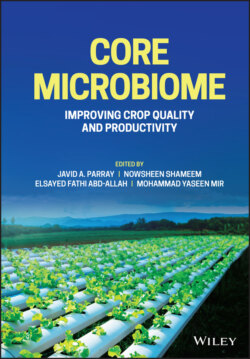Читать книгу Core Microbiome - Группа авторов - Страница 55
3.8 Management Strategies to Alleviate Abiotic Stress in Medicinal Plants
ОглавлениеVarious bacterial genera can promote plant growth and are known as plant growth-promoting rhizobacteria (PGPR). Moreover, scavenging of ROS, the compatible solutes, and accumulation of antioxidant metabolites are induced signals for important transcriptional modulation activities under heat stress (Wahid et al. 2007). Most endophytic actinomycetes belong to the genus Streptomyces, which is responsible for about 80% of biologically active compounds. Actinomycetes protect medicinal plants by reducing the growth of fungal pathogens with chitinases acting as inhibitors of fungal growth. The use of endophytic actinomycetes for controlling S. rolfsii offer an eco-friendly environment and disease management (Nagpure et al. 2014). IAA has a role in stem elongation and root growth. The IAA value is high in the rhizosphere, where rhizosphere bacteria produce auxin as secondary metabolites because of rich supplies of root exudates. It also triggers the propagation of lateral roots that increase the nutrients-absorbing area, which leads to better assimilation of water and nutrients from the surroundings.
Actinobacteria also produce IAA, cytokinin’s and gibberellic acid. Aspergillus and Streptomyces produce a high level of IAA, which leads to the production of hematophagous actinomycetes (Ruanpanun et al. 2010). The application of rhizobacteria improves plant growth as well as soil microbial activity (Karami et al. 2010). With nourishment from microbes in the stress environment and adaptable response at the phenotypic level, it is always appropriate to implement microbe-derived natural products that can perform a good job to alleviate stress regardless of environmental conditions.
